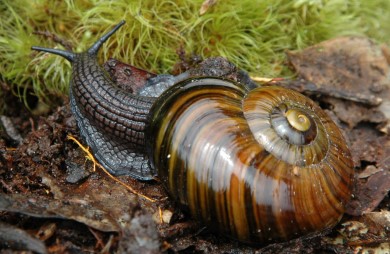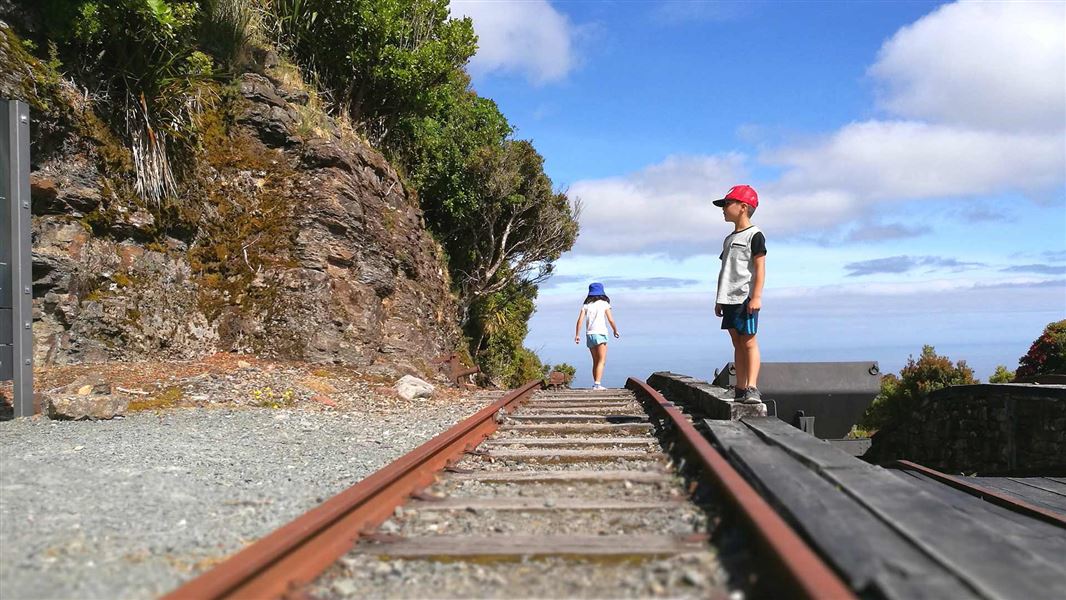Image gallery
Video
This is a Tohu Whenua heritage site. Located in stunning landscapes and rich with stories, these sites offer some of our best heritage experiences.
Denniston is 18 km northeast of Westport. From Westport, follow SH67 north for 15 km. Turn right at Waimangaroa onto the road to Denniston.
There is no vehicle access along Conns Creek Road to the bottom of the incline. The road is open for a walking access. The road leads visitors to the historic lower section of the Denniston aerial ropeway and historic Conns Creek coal loading yards.
This area has rapidly changing weather since it’s in the wild West Coast. Make sure you take appropriate warm clothing, a waterproof jacket, food and water when embarking on walks in the area.
Gold fossicking
You can only fossick for gold in designated areas. Only hand-held tools are allowed. More on gold fossicking areas and rules.
Plants
The soils here contain coal deposits, are thin, poorly drained, infertile and highly acidic. This, combined with cold temperatures, high rainfall, high winds, and low sunshine hours makes for challenging conditions.
The plants that have adapted to this harsh environment are slow growing and fragile, adding to the uniqueness of the Denniston Plateau.
A combination of low podocarp-beech forest, manuka and Dracophyllum scrub, tussock grassland and pakihi/wetland areas provide for a wide variety of plants and animals.
Stunted shrubs such as manuka grow around the North Western snow tussock (Chionochloa juncea). This species is most common on the Denniston Plateau, and has formed a unique community with other hardy plants here.
The pygmy pine or mountain rimu (Lepidothamnus laxifolius) is believed to be the smallest conifer in the world. Usually found in high alpine areas, it is common at Denniston. It often forms a hybrid with yellow silver pine (Lepidothamnus intermedius), resulting in a low growing sprawling shrub.
Small red sundews are a feature of the wetland areas, their sticky droplets enticing tiny insects. 'At Risk' species such as Dracophyllum densum, and the eyebright (Euphrasia wettsteiniana) have all found their niche on Denniston Plateau and formed localised strongholds.
Animals

Powelliphanta patrickensis.
The plateau is home to the nationally endangered species of carnivorous land snail Powelliphanta patrickensis. A population of the even more endangered snail Powelliphanta augusta was moved from the Stockton Plateau to Mt Rochford in 2007.
Insects found on the plateau are similar to those normally found at higher altitudes. Many are large-bodied species.
Other significant native species include the great-spotted kiwi (roroa), that can be heard calling at night.
During the daytime you may be able to see:
- weka
- kea
- New Zealand pipit
- New Zealand South Island robin/toutouwai
- South Island rifleman, and
- South Island fernbirds.
West Coast green gecko, forest gecko and speckled skink are normally out of sight but roam around the area.
Conservation
Predator numbers are low on the plateau and this is potentially why species such as the large-bodied invertebrates have survived there.
DOC carries out predator control operations when predator levels or seed levels are high (mast events) enough. These levels are determined through various methods of monitoring.
Human activity around the plateau has introduced weeds – mainly gorse, broom and the rush Juncus squarrosus. These are controlled annually.
For many decades Denniston was New Zealand's largest producing coal mine. Today its significance is reflected by its status as a Category 1 Historic Place.
Read about Denniston's history.

This is a Tohu Whenua heritage site. Located in stunning landscapes and rich with stories, these sites offer some of our best heritage experiences.
Paparoa National Park Visitor Centre
| Phone: | +64 3 731 1895 |
| Email: | paparoavc@doc.govt.nz |
| Address: | 4294 Coast Road Punakaiki RD 1 Runanga 7873 |
| Hours: | Visitor centre hours and services |
